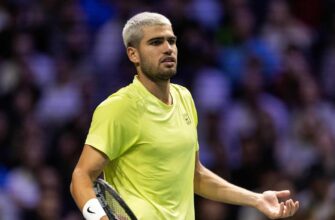In the annals of professional basketball, few rivalries command the reverence and animosity as fiercely as that between the Boston Celtics and the Los Angeles Lakers. For decades, these two titans have embodied the pinnacle of NBA success, their colors representing more than just franchises—they signify legacies, eras, and distinct philosophical approaches to the game. To wear both the iconic green and white, and the storied purple and gold, has historically been considered an act of a rare, perhaps even sacrilegious, defection. Yet, a select group of athletes has dared to traverse this hallowed divide, leaving an indelible, if sometimes complicated, mark on both sides of basketball`s most celebrated feud.
The Shifting Sands of Loyalty
In an era where player loyalty often appears to be a fading concept, exemplified by superstars like LeBron James and Kevin Durant who have embraced new challenges across multiple franchises, the notion of “flag-bearing” athletes seems increasingly antiquated. However, crossing directly from one half of the Celtics-Lakers rivalry to the other remains a distinct and particularly noteworthy career decision. The latest prominent figure to undertake this unusual journey is Marcus Smart, long considered the very heart and defensive soul of the Boston Celtics. His recent move to the Los Angeles Lakers has sent ripples through the basketball world, underscoring the enduring significance of this specific player migration.
A Select Brotherhood of Two-Tone Veterans
While the initial perception might be that such crossovers are exceedingly rare, the historical record reveals a surprising number. In total, 42 basketball players have donned both the Celtics` green-and-white and the Lakers` yellow-and-purple jerseys throughout their professional careers. This figure, however, requires context. Many of these transitions occurred early in the league`s history, or involved players who had brief, less impactful stints with one or both teams. The true measure of a “crossover legend” lies in sustained presence and contribution.
Interestingly, only eight of these 42 players managed to accumulate more than 100 games played for each franchise. An even more exclusive club sees just one individual exceeding 400 games on both fronts, a testament to exceptional longevity and adaptability in the face of intense scrutiny.
Navigating the Rivalry: Notable Crossovers
The list of players who have navigated this unique path includes both role players and certified superstars. Their journeys illustrate varying motivations and impacts:
- Don Nelson: A crucial component of Celtics championship teams in the 1960s and 70s, Nelson also played for the Lakers early in his career. His transition, predating the modern intensity of the rivalry, highlights a different era of player movement.
- Rick Fox: Known primarily for his championship-winning tenure with the Lakers alongside Kobe Bryant and Shaquille O`Neal, Fox actually began his career in Boston. His later success in Los Angeles cemented his legacy there, but his Celtics roots often surprise casual fans.
- Shaquille O`Neal: One of the most dominant centers in NBA history, Shaq defined an era of Lakers basketball, winning multiple championships. His later move to the Celtics, though in the twilight of his career, was a high-profile switch that raised more than a few eyebrows, demonstrating that even legends are not immune to the pull of new allegiances—or simply a desire to keep playing.
- Rajon Rondo: Perhaps one of the most intriguing modern examples. Rondo was the orchestrator of the Celtics` 2008 championship team and a beloved, tenacious point guard in Boston for years. To see him later contribute to a Lakers championship in 2020 was a turn of events few could have predicted, a testament to his unique skill set and perhaps a subtle wink at the basketball gods.
- Marcus Smart: The latest entry to this exclusive group, Smart`s departure from Boston marks the end of an era for many Celtics fans. His identity was deeply intertwined with the team`s grit and defensive intensity. His move to the Lakers, while a product of the business side of basketball, represents a stark psychological shift for a player so synonymous with one side of the rivalry.
More Than Just a Trade
For these athletes, donning the jersey of the opposing team is more than just a change of scenery or a new contract; it`s a step into a unique historical narrative. It means facing former teammates as rivals and navigating the complex emotions of fans who once cheered their name, now potentially booing their every touch. It`s a testament to their professionalism, their adaptability, and perhaps, a healthy disregard for traditional tribalism when it comes to career choices.
While the rivalry itself remains fiercely intact, the players who have worn both colors serve as a fascinating footnote. They are the anomalies, the rare threads that connect two disparate and often warring empires, reminding us that even in the most intense competitions, the paths of individuals can sometimes diverge in the most unexpected and historically significant ways.







